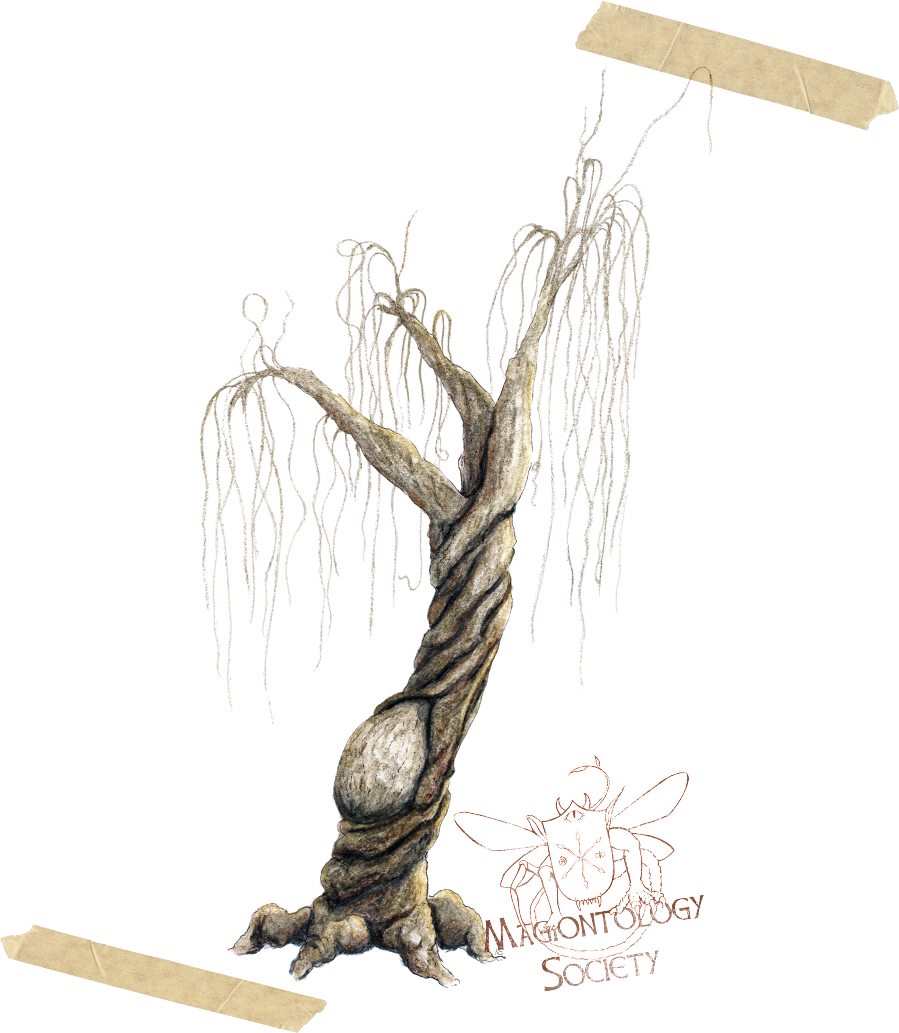Arbos gluttiens record file (Gobbling tree)


Scientific name:Arbos gluttiens
Common name(s): Gobbling tree
(trapping tree, spider tree)
Average size: 5-8m tall, trunk is 50-70cm wide
Diet: Carnivorous. Older, larger specimen can trap humans.
Favoured habitat (natural): Thick woodland, often in high elevation
Classification:
Exossia Mixturidae Polymorphidae Sceletata
Sfungidae Silvidae Fae Undead
Key traits & Identifiers
- At first glance, can be mistaken for a dry willow tree.
- Completely leafless.
.
TAKE HEED
- Long reach and high agility, keep well away.
- Sense movement and locate their prey through tremors in the ground.
- Bulbus growth on the trunk usually means that the tree is feeding and is less likely to attack.
Description:
Arbos gluttiens are medium size trees, with a curving trunk and long wispy leafless branches. The trunk has a coiled structure, which allows some elasticity. Arbos gluttiens are mobile, capable of uprooting themselves and relocating, but their progress is very slow. The sluggishness of the roots, however, is contradicted by the remarkable speed and flexibility of their branches.
When stationed, the roots are used to sense minute tremors in the ground and thus locate prey. Once in range, the branches move speedily to wrap the prey and drag it in between the coils of the trunk, where rapid cell growth creates a stomach around the prey and begins to digest it. The stomach looks like a bulbus growth on the trunk, and will slowly reduce in size during the digestion process. It is worth noting that the prey generally dies during the trapping stage, the branches often snapping its neck, so it is already dead at this point.
Remove these ads. Join the Worldbuilders Guild










Comments